- Quick Read
- Deep Read ( 9 Min. )
In Today’s Issue
- Small county’s big role in war on drugs
- To curb urban flooding, China is building ‘sponge cities.’ Do they work?
- What’s combat like for a drone operator? Up close and personal.
- Why Katie Ledecky’s gold represents something bigger at the Games
- Grab your oar: ‘Jungle Cruise’ takes viewers on a wild ride
Monitor Daily Podcast
- Follow us:
- Apple Podcasts
- Spotify
- RSS Feed
- Download
TODAY’S INTRO
Why do these Olympics matter? Ask Sunisa Lee.
 Mark Sappenfield
Mark Sappenfield
The Monitor’s Noah Robertson was in the stands for a moment that, just a few days ago, would have been unthinkable. This morning in Tokyo, America’s Sunisa Lee won gold in the women’s gymnastics all-around competition.
Before the Games began, this medal was already all but hung around Simone Biles’ neck. But when she withdrew from the team event and the individual all-around, there was Ms. Lee – a rock in the team competition and now, unexpectedly, in the individual spotlight.
Through these Olympics, Noah says he’s been thinking about why competition matters and whom athletes compete for. Swimmer Katie Ledecky told him she swims for those who want her to win gold – to give them hope and joy. For Ms. Lee, it is her father, who refused to let her quit when he was paralyzed in an accident. And her Hmong American community back in Minnesota – it would mean so much to them, her father told her. Noah sees this as the “strength of generosity.”
It was apparent, too, when Ms. Biles pulled out of the team event. Ms. Lee could have been resentful, or simply quiet. But she and her teammates were vocal in support of their friend – Ms. Lee’s admiration of her hero only amplified.
After her victory today, she hugged her competitors and took selfies with them. “She seemed very much at peace,” Noah says. Her golden moment, it seemed, had revealed no hidden superpower, but rather what has always been there, waiting for the world to notice.
Share this article
Link copied.

Help fund Monitor journalism for $11/ month
Already a subscriber? Login

Monitor journalism changes lives because we open that too-small box that most people think they live in. We believe news can and should expand a sense of identity and possibility beyond narrow conventional expectations.
Our work isn't possible without your support.
A deeper look
Small county’s big role in war on drugs
The fractured relationship between police and the Black community today is significantly shaped by how the United States changed its approach to illegal drugs 50 years ago.
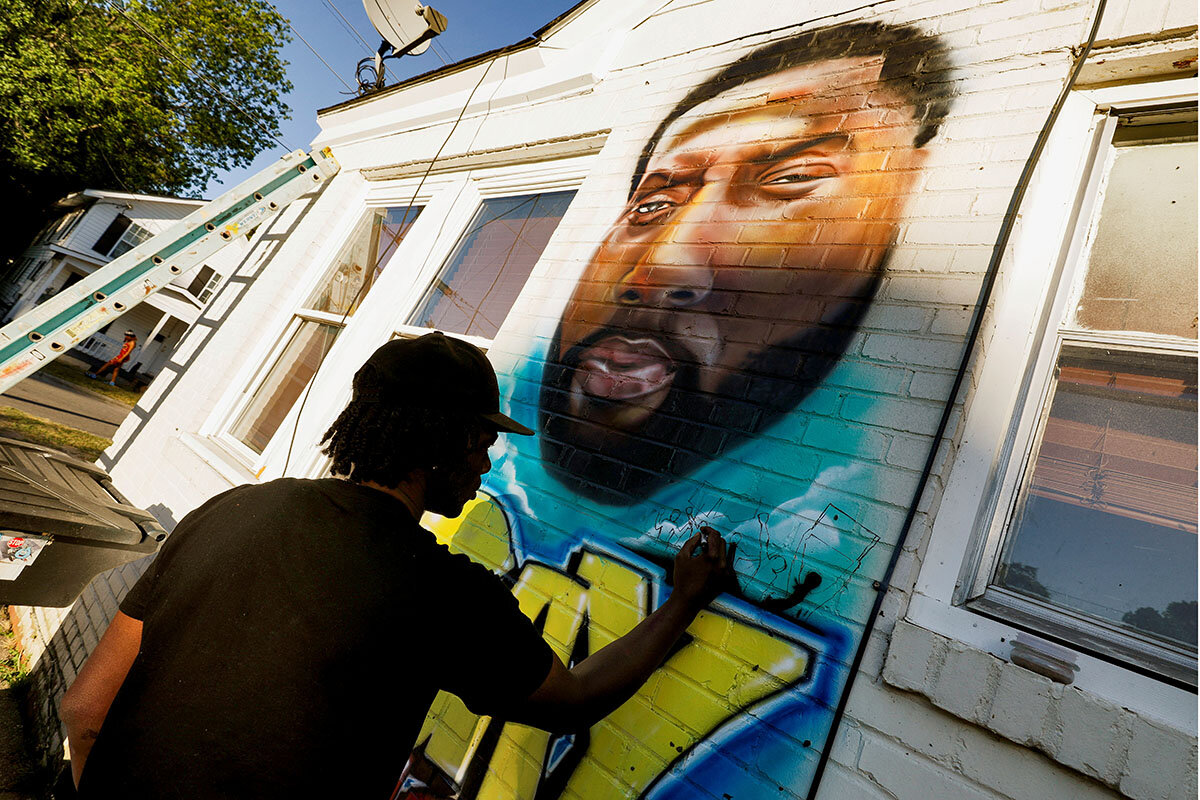
North Carolina’s Pasquotank County shows what has – and hasn’t – changed in America’s war on drugs. In April, Andrew Brown Jr., who is Black, was fatally shot 14 times during a drug raid, though unarmed and with no drugs on the premises.
The local district attorney said deputies did nothing illegal, and through the decades, aggressive anti-drug policing largely won bipartisan support. But as more such incidents have come to light, the war on drugs is coming under greater scrutiny.
Pasquotank County reveals how urban areas are shifting their values and morals around drug policy and policing. There is a mounting conviction that the war on drugs has done too much damage to minority neighborhoods.
“The fundamental reorientation [during the war on drugs] of what it was to be a big city or small town police officer was just profound,” says historian David Farber. Dealing with broader crime problems through a drug lens “turned out to be really effective, because drugs were so ubiquitous,” he says. “It became a naturalized way to police.”
The growing question is whether those tactics are necessary or whether they have overmilitarized policing, with the Black community bearing the brunt of the human cost.
Small county’s big role in war on drugs
When sheriff’s deputies in coastal North Carolina broke department policy by shooting into a fleeing car, killing the driver, they were justified, the district attorney said. The man killed was a “violent felon,” and the officers felt their lives were threatened, he argued.
But when resident T.J. Selsey saw the truck with heavily armed deputies speed past his house in Elizabeth City on April 21, he had one thought: “Lynch mob.”
Andrew Brown Jr. was killed when deputies serving felony warrants and a search warrant surrounded his car as part of a drug sting. When Mr. Brown, who is Black, attempted to escape in his vehicle, the deputies fired 14 shots, killing him when one hit the back of his head. Mr. Brown was unarmed.
The two interpretations of what happened that day point to a fault line that runs through Pasquotank County here and through the nation as a whole. Is America’s war on drugs, now in its 50th year, taking the necessary steps to maintain law and order, or has it warped and overmilitarized policing, with the Black community bearing the brunt of the human cost?
Born of the backlash to the 1960s-era drug counterculture, the war on drugs has since become a primary thrust of modern policing. The bipartisan support of years’ past, however, has crumbled as awareness of incidents such as those involving Mr. Brown have grown. In particular, the no-knock drug raid in Louisville, Kentucky, that killed Breonna Taylor resulted in widespread protests.
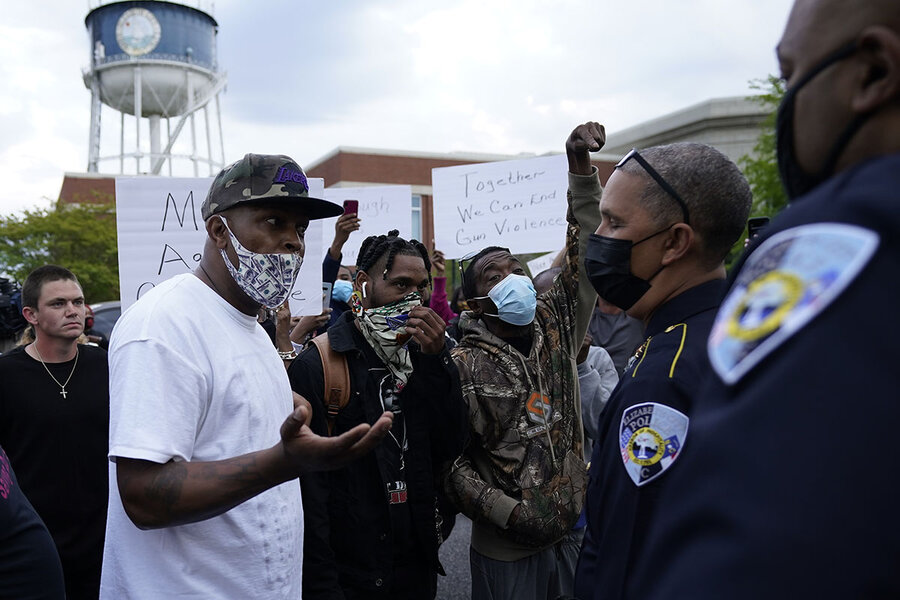
Here, the fault line is as obvious as the next election. Sheriff Tommy Wooten, who is white, has stood by the deputies. His challenger, Eddie Graham, who is Black, has pointedly said, “I would have handled [the arrest of Mr. Brown] differently.”
The picture is of a county divided, as the more liberal, minority-dominated Elizabeth City (population 18,000) shifts its values and morals around drug policy and policing away from those of more rural, conservative areas. In that way, Pasquotank County gives a glimpse of the country as a whole, illustrating both stark challenges and glimmers of potential in how communities and local police forces reckon with racially disparate impacts of the drug war.
“Drugs have always been depicted as this extraordinary enemy requiring extraordinary tactics,” says Matthew Pembleton, a historian at American University in Washington. “It’s always been a way to do things differently, ... to use tools or force that otherwise could never be justified. It’s true that drugs are a problem with real social consequences. But [dealing with them] has always served as justification for state power.”
Increasingly, however, “there are a lot of things pushing us toward this reassessment of the war on drugs,” he adds.
Rethinking the war on drugs
One of the factors is the opioid epidemic among America’s white, blue collar communities, which has created more empathy for those struggling with addiction. In more affluent communities, recreational drug use has also become less taboo.
Recently, 59% of voters in Oregon voted to decriminalize possession of small quantities of all drugs, even cocaine and heroin. And so-called harm reduction initiatives are replacing incarceration for drug offenders in communities around the United States.
But part of this shift has also been the mounting conviction among many Americans that the war on drugs has done too much damage to minority neighborhoods. Cases like Mr. Brown’s have become rallying points.

“Andrew’s case is tragic, [and] one thing I keep thinking about is the fact that we’ve made it so that drug activity could lead to a death sentence,” says Maritza Perez, director of national affairs at the Drug Policy Alliance in Washington, D.C. “It goes back to the fact that we tend to think about people who are drug-involved as almost less deserving of equal rights and human rights.”
According to the Federal Bureau of Investigation Uniform Crime Report, annual drug-related arrests in the U.S. peaked at nearly 1.9 million in 2006, declining to about 1.5 million by 2019. In 1980, about 580,000 people were arrested on drug charges in the U.S.
After Congress passed stiffer penalties for crack and other drugs, the Black incarceration rate tripled from about 600 per 100,000 people in 1970 to 1,808 by 2000, according to a Prison Policy Institute analysis of Department of Justice data. Black people remain three times more likely to be arrested on a drug charge, even though white people use illicit drugs at roughly equal rates.
Part of the drug war’s momentum inside policing? Its tactics have become baked into how police approach poorer communities.
“The fundamental reorientation [during the war on drugs] of what it was to be a big city or small town police officer was just profound,” says David Farber, a historian at the University of Kansas and author of “Crack: Rock Cocaine, Street Capitalism, and the Decade of Greed.”
Dealing with broader crime problems through a drug lens “turned out to be really effective, because drugs were so ubiquitous,” he says. “It became a naturalized way to police.”
“Now we’re seeing a sea change. But policing hasn’t quite caught up to that yet.”
What happened in Elizabeth City
A clash of those forces took shape on the morning of April 21 on Perry Street, a largely African American neighborhood on Elizabeth City’s west side.
For Mr. Selsey, a Black artist, the raid seemed part of the larger national story. It was carried out the day after a Minneapolis police officer was convicted of murdering George Floyd.
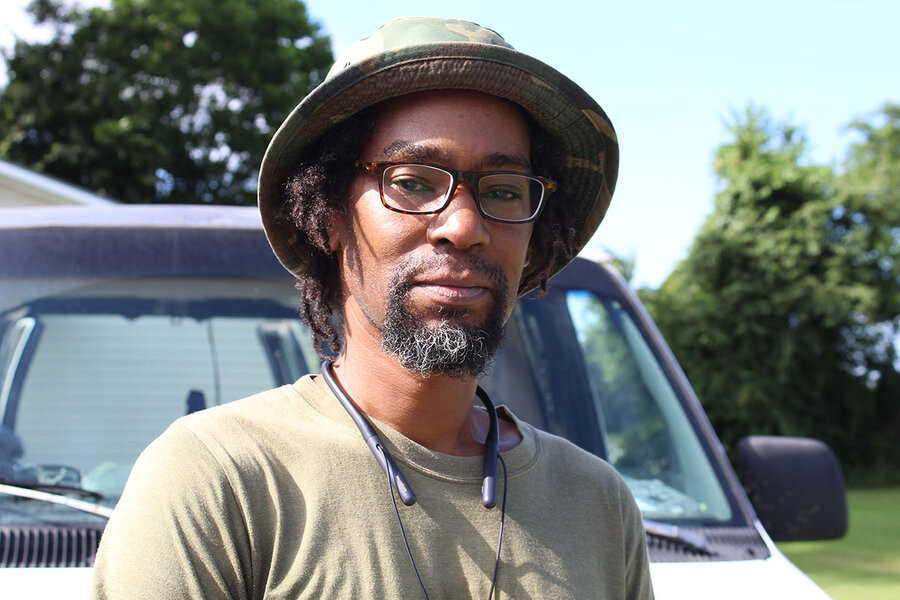
“Taken together with everything else that is going on, that raid seemed like a power play,” he says.
When the local district attorney later called Mr. Brown a “violent felon,” City Councilor Kem Spence was taken aback. Mr. Brown had resisted arrest in the past, but no drugs were found in the April 21 raid. Though an autopsy found small amounts of methamphetamines in Mr. Brown’s blood, it concluded they “likely did not play a role in Mr. Brown’s cause or manner of death.”
With all those complications and nuances, Mr. Spence, who is Black, is grateful for an ongoing investigation of the incident by the U.S. Department of Justice.
“We don’t have the answers to what really happened that day,” he adds. “And, frankly, that scares me.”
None of the deputies involved were fired, but two have resigned, and at least three who opened fire received internal discipline for several department violations, including not having medical care ready nearby and the failure to turn on two of the body cameras on scene.
“While the [district attorney] concluded that no criminal law was violated, this was a terrible and tragic outcome, and we could do better,” Sheriff Wooten said in a recorded statement on May 28. “This should not have happened this way at all. While the deputies did not break the law, we all wish things could have gone different, much differently.”
Several calls to Sheriff Wooten’s office were not returned.
Pasquotank portrait
Racial tensions in Pasquotank County aren’t far from the surface. While there is a new Black Lives Matter mural in downtown Elizabeth City, Confederate flags can be seen on the waterfront of nearby Nixonton.
The past two presidential elections have shown a county evenly split, with Donald Trump doing better in 2020 than he did in 2016, losing to Joe Biden by only a few dozen votes.
During recent protests for racial justice in Elizabeth City, Sheriff Wooten pulled his deputies. In a June 23 letter, he criticized the city council, saying that “by the City of Elizabeth City’s continued issuance of permits, they have allowed and encouraged daily protests by a very small group of our community to hinder the lives of our citizens.”
In what many here saw as a tit-for-tat jab, the city council approved the large Black Lives Matter mural for a street within view of the sheriff’s office. The mural was defaced hours after it was completed.
The detective assigned to that case was Mr. Graham, the candidate for sheriff. Thanks to video footage and social media, Mr. Graham found and arrested the alleged perpetrator, who is white.
Mr. Graham, who faced racial epithets the last time he ran for sheriff in 2018, says Mr. Brown’s shooting has brought policing in Elizabeth City to a crossroads.
Fair, decent, and professional police work, he says, is ultimately “a matter of the heart.”
“I am still going to arrest people, and if drugs are against the law, I’ll arrest people for drugs,” says Mr. Graham. “But when I arrest someone, they often seek me out afterwards to talk, because they appreciate how I treat them, and how I basically tell them: “You broke the law, so now there’s some business at the courthouse we have to take care of. Let’s go sort it out.’”
A push to “back the blue”
Tim Hulett has a different view of the situation.
A supporter of Sheriff Wooten, Mr. Hulett is a former drug user who spent time in prison – at one point with Mr. Brown. He says he knows what it’s like to have police pointing guns at him and ordering him to the ground.
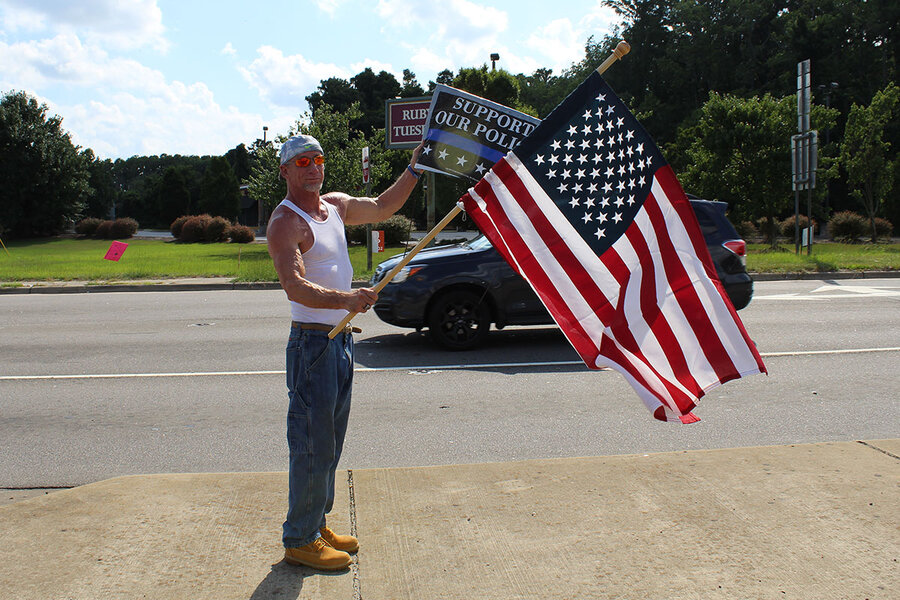
He doesn’t blame officers for his plight, only himself. In that way, Mr. Hulett says he can see in his own redemption a need for what he calls a “law and order” outlook that requires strong, effective, and unyielding law enforcement of drug laws. Sheriff Wooten, he says, has provided that kind of policing, and it has, he says, worked: “He’s really cleaned up this town.”
Mr. Hulett has pulled a parade permit for a “Back the Blue” rally on Aug. 7.
“I’m trying to get the people not to rise up in anger, but to wake up, speak up, stand up, show up, because if we do not we’re going to lose this little great reputation that we have in our city from the Outer Banks all the way to Currituck,” says Mr. Hulett.
Other conservatives sense that local policing strategies may have to adjust to a society that seems to be seeing the war on drugs differently.
Pasquotank County Commissioner Sean Lavin, who is white, grew up in a Black neighborhood in Greenville, North Carolina, the son of a teacher and a police officer. He is deeply sympathetic to police, whom he instinctively trusts. But he also wants to see accomplishments by Black residents more prominently acknowledged.
Conversations about the interplay of drug interdiction and race since the killing of Mr. Brown have helped him “realize how very similar we are ... despite our different experiences.”
In that way, he says, “I am glad to see the pivot toward understanding the demand side instead of just fighting the cartels, who are just the suppliers, really. I think there’s going to be a lot of evaluation of policies and practices that will come out of any change to legalization of drugs, and any good police department should be doing that anyway, based on what they are seeing.”

To curb urban flooding, China is building ‘sponge cities.’ Do they work?
Flash floods are wreaking havoc in towns and cities across the world. China’s nature-based approach to urban drainage may offer a partial solution.

- Quick Read
- Deep Read ( 6 Min. )
Since 2014, China has invested billions of dollars to build natural features in cities that can absorb water during storms. These “sponge cities” are a response to the increasing risk of flooding in cities that climate change has made more vulnerable than ever.
Last week’s record downpour in central China caused chaos in Zhengzhou, where subways and highways flooded despite the city having sponge features in place. Experts say the intensity of the rains – about a year’s worth in only four days – was too much for these features to absorb in such a short period of time. “For this type of rain, the soil will be saturated very, very quickly,” says Faith Chen, a professor of environmental science.
For China, where 64% of people now live in cities, this approach is a departure from the construction of dams, dikes, and levees. Yu Kongjian, a landscape architect who came up with the sponge city concept, has said it offers a more harmonious relationship between humans and nature. Parks can be dry in some seasons and become channels during rainy months. “Floods are not enemies; we can make friends with floods,” he says.
To curb urban flooding, China is building ‘sponge cities.’ Do they work?

China’s innovative, multi-billion-dollar program to mitigate urban flooding using natural means – by creating “sponge cities” – faced its biggest test yet last week, and showed its limitations.
A sudden, record downpour on July 20 overwhelmed the landlocked central city of Zhengzhou, one of 30 designated sponge cities, causing massive flooding in the subway system and highways, and across the city and surrounding region, as about a year’s worth of rain fell in only four days.
“The incident of Zhengzhou is very rare and very unfortunate,” says Faith Chan, associate professor of environmental sciences at the University of Nottingham Ningbo China, who has researched the sponge city projects. But, he adds, “we can learn from this incident.”
China’s sponge city program aims to use pervious pavements, rain gardens, green roofs, urban wetlands, and other innovations to absorb water during storms. The soil then purifies that water and gradually releases it – much like a sponge. The government has invested more than $12 billion in the program since 2014 to help cities create sponge features on 20% of the land, with the goal of retaining or reusing 80% of annual precipitation by the 2030s. The program is a window into how China is trying to balance the breakneck build-out of urban areas with environmental adaptions that potentially offer a model to other flood-prone nations.
Although Zhengzhou has spent more than $80 million since 2016 to create green belts, permeable roads, and collection wells to reduce flooding from heavy rainfall or overflow from major rivers, the intensity of last week’s rain rapidly submerged the area designed to absorb it. “For this type of rain, the soil will be saturated very, very quickly,” Professor Chan says.
“The sponge city program is good stuff, but it only can withstand the mild or large rainstorm” that comes once in 30 years, he says. The task ahead for China’s government is not to abandon the more sustainable and ecologically friendly approach to absorbing and recycling stormwater, but to pay greater attention to climatic extremes and uncertainty, he says.
A concrete jungle rises
Underlying the rising danger of climate change-induced flooding in Chinese cities is the country’s unprecedented urbanization. Since 1978, China’s urban population has expanded fivefold to 900 million – 64% of its population of 1.4 billion people now lives in cities.
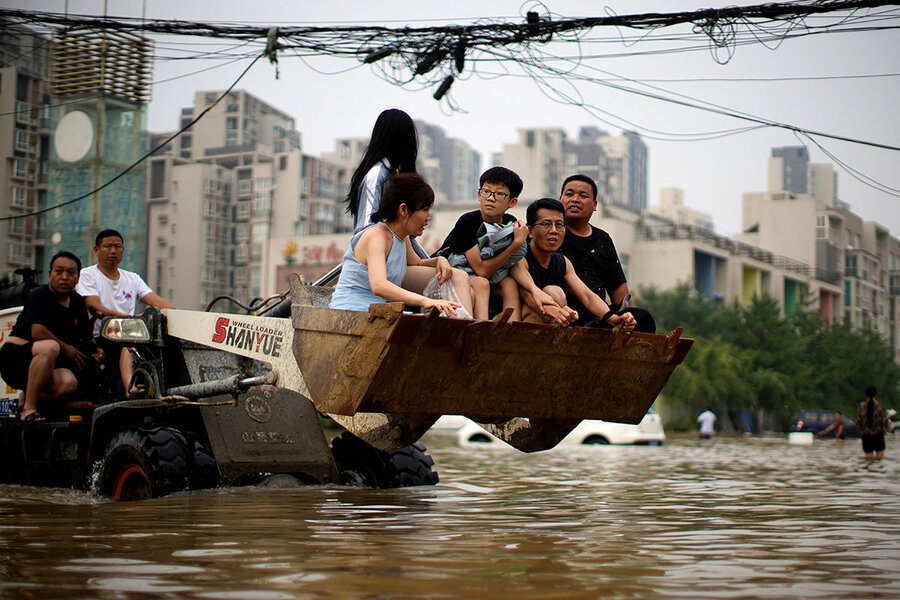
As highways, buildings, and other infrastructure pave over land and shrink green space, surface flooding has emerged as the most serious water-related problem in urban China, with floods affecting scores of Chinese cities each year. Urban drainage systems in most Chinese cities are “insufficient to cope with rising urban flood risk” amid climate change, and in July last year more than 20 million city dwellers were hit by floods in 24 provinces, according to a 2020 paper by Chinese scientists.
The problem has also spurred a rethinking of the traditional “gray,” or hardened, flood-control infrastructure predominant in China, which has constructed 97,000 dams since the 1950s. The government’s emphasis on building dams, dikes, and levees to prevent riverine floods has been less effective in ensuring the protection of growing cities on floodplains, especially amid extreme rain, experts say.
“Dams are typically triumphed as flood mitigation tools, but as dams get larger, they tend to complicate flooding controls due to the unpredictability of climate change,” says Kirk Barlow, an Asia-focused staff member of International Rivers, an Oakland, California, nonprofit devoted to protecting rivers. He points to the collapse of two dams in Inner Mongolia from heavy rains in mid-July.
A harmonious relationship with nature
Yu Kongjian, a professor of landscape architecture at Peking University, is credited as the main architect of the sponge city concept. In a 2019 video for the World Economic Forum, he described the previous approach to flood prevention as “totally wrong.”
“We think we can use concrete to channelize the river; we think we can use dikes to protect the city from being flooded and we drain away all the water,” but instead, such structures are causing floods, he says. “Those gray infrastructures are actually killers of the natural system, which we have to depend on for our sustainable future.”
Professor Yu’s sponge city concept promotes a more harmonious relationship between humans and nature that in effect gives water more room to soak in and pool in urban areas – such as parks that are dry in some seasons and become shallow ponds or channels in rainy seasons. “Floods are not enemies; we can make friends with floods,” he says.
But the scale of the rain in Zhengzhou, capital of Henan province on the arid North China Plain, shocked the city and engulfed its sponge features.
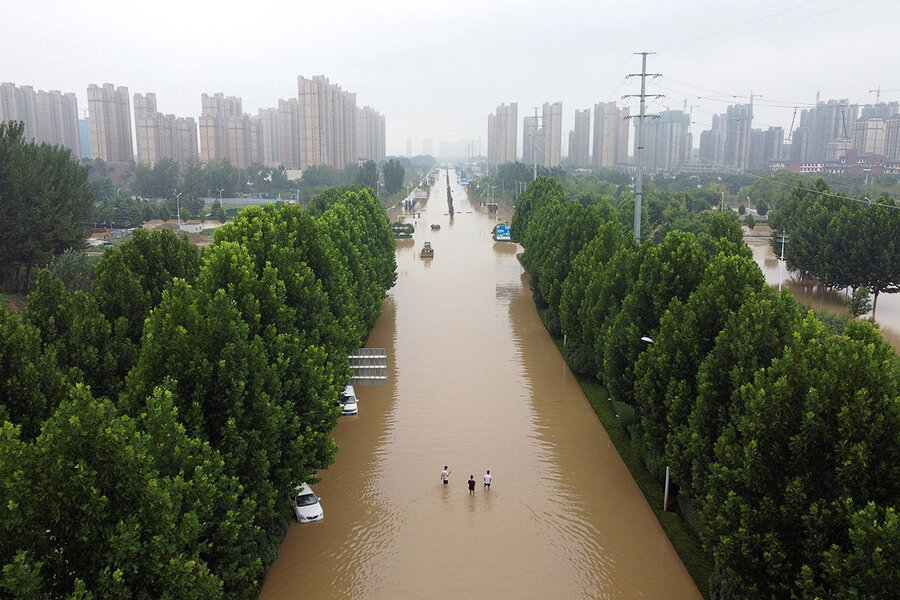
Despite red alerts from meteorologists, 12 million residents were still going to work and school as usual when the heaviest rain struck, inundating roads and part of the subway system, where some 500 people were trapped for hours amid rising waters.
Commuters clung to trees and lampposts as rushing, waist-high waters churned through the city; the death toll to date is 73, according to state-run media. The flooding shut down transportation and cut electricity, water, internet, and phone connections in the city and its hinterland, impacting 13 million people and forcing more than 1 million to relocate. About 450,000 acres of crops were wiped out and thousands of pigs and other livestock killed in surrounding farmland in the region known as China’s breadbasket, adding to total economic damages estimated at more than $10 billion.
The incident highlighted how far China has to go to address the problem of waterlogging in cities, experts say.
“It’s quite clear that we need to take this far more seriously. And sometimes it takes kind of a real big disaster for that to happen,” says Ma Jun, director of the Institute of Public and Environmental Affairs in Beijing, noting there was a “gap” in the city management’s response. “We should not waste any crisis and take this as a lesson,” he says. “The whole trend of extreme, heavy rainfall is clear.”
The politics of hydrology
Indeed, as Zhengzhou struggles to recover, the heightened flooding risk is striking a political nerve in China, where since ancient times the ruler’s mandate has been tied to the state’s capacity to “order the waters” by controlling floods, with dynasties falling if they failed to do so.
China’s origin myths center around Yu the Great – founder of the earliest dynasty, the Xia – who according to legend carved out river basins on the North China Plain, where the Yellow River now flows through Zhengzhou.
“Throughout history and in the 20th century, water resource management and flood control are highly political issues” in China, says Sabrina Habich-Sobiegalla of the Institute for Chinese Studies at the Free University of Berlin.
In a reflection of this sensitivity, Chinese leader Xi Jinping issued an “important instruction” on July 21, the day after the Zhengzhou deluge, demanding that authorities prioritize flood prevention, “locate hidden dangers,” and improve the early warning system for rainfall.
On Wednesday, Chinese flood control officials and meteorologists warned that more heavy rainfall, typhoons, and floods are likely in August, including in megacities such as Beijing and Tianjin. They vowed to step up monitoring of rivers and reservoirs and provide early warnings of catastrophic weather to allow for timely evacuations, according to state-run media reports.
As for sponge cities, Professor Chan says targets that the government has set for absorbing water are “very ambitious,” and may ultimately be adjusted. Challenges such as financial constraints and a lack of public participation due to China’s top-down policy approach have slowed implementation, he says.
“Those cities need to find money to keep the plan going, and that is not easy,” he says. “We still need time to improve the effectiveness.”
Still, environmental experts believe the catastrophic rains in Zhengzhou and elsewhere will help raise awareness in China about the growing risks of climate change and the imperative for action. “It’s obviously hit home,” says Mr. Ma. Now, he says, “we need to provide very feasible solutions, and ways for people to join the effort.”

What’s combat like for a drone operator? Up close and personal.
Reliance on drones in warfare poses new challenges for the soldiers who operate them and could help redefine what courage means in the military.

- Quick Read
- Deep Read ( 6 Min. )
Fighting wars with drones could change traditional views of courage in the military.
Retired Lt. Col. Wayne Phelps, former commander of a drone unit for the U.S. Marines, notes that the images of those being observed are quite clear. “You watch guys walking their kids to school and playing with them in the backyard for hours,” he says. This creates a “one-sided intimacy” with the person you intend to kill.
Drone operators “might be removed from harm’s way, but emotionally and cognitively … they’re in that fight,” he says.
Courage needs to be redefined in the military, Lieutenant Colonel Phelps adds, so that the bravery needed to fly a jet into enemy territory isn’t all that’s valued.
Offering an example of moral courage, he tells of a drone operator who, when ordered to strike a house, did so. Afterward, he saw a man carrying an injured girl out of the house and into a car. When ordered to strike the car, the drone operator refused, saying, “Absolutely not. I’m not going to strike that car knowing there’s a wounded little girl in there.”
“I’m proud of some of the decisions that these drone crews are making,” says Lieutenant Colonel Phelps. “It’s not easy.”
What’s combat like for a drone operator? Up close and personal.

In his new book, “On Killing Remotely: The Psychology of Killing with Drones,” retired Lt. Col. Wayne Phelps, former commander of a remotely piloted aircraft (RPA) unit of the U.S. Marines, found that the average drone operator has conducted more than 50 strikes resulting in the deaths of 50 or more enemy combatants.
The number of RPA units will likely increase, judging by former Secretary of the Navy Ray Mabus’ prediction that the F-35 joint strike fighter jet will “almost certainly be the last manned strike fighter aircraft” that the Pentagon “will ever buy or fly.” Given that, the U.S. military must reckon with the impact of RPA missions on its members, Lieutenant Colonel Phelps says in an interview with Monitor correspondent Anna Mulrine Grobe. The following excerpts have been lightly edited.
Q. In your book you emphasize the extreme distance – but also the extremely vivid window on enemies – that drones provide for the U.S. troops who operate them. This means that after killing with drones, some RPA crews describe the experience as akin to hitting an “emotional funny bone.” Can you talk about this?
The persistent nature of drones allows us to watch a person for 8 or 24 hours, or for months. Early video monitors for RPAs were grainy – targets looked like blobs, not people. Today, the video feed is really good – you can tell what color shirt they’re wearing. You can see their hand gestures, their gait. It’s almost too good. I don’t know if it needs to be that good.
So you really observe the humanity of this person. You watch guys walking their kids to school and playing with them in the backyard for hours. As one analyst said, there’s no doubt they’ve done nefarious things, but with some there’s also no doubt that they’re good fathers and husbands.
You develop a one-sided intimacy with a person, and then you’re severing that intimacy when you kill them. It’s unlike any other weapon that we’ve deployed before.
And I think it’s important that we recognize that [RPA crews] might be removed from harm’s way, but emotionally and cognitively, they’re there. They’re in that fight.
Q. What are the implications of this kind of warfare?
What struck me about it was that – despite it being described as “video game warfare” – there’s a reluctance sometimes of people who are trained professionals in the military to kill. I actually think it’s refreshing. It should always be difficult to kill another human. I don’t think we want people who have no problems with that. We don’t want psychopaths conducting our combat operations. We want people who are ethical and who follow rules of engagement – who understand the humanity of the target.
Normally the military dehumanizes the target for us to mentally get over that natural resistance humans have to killing each other, but drones have the opposite effect of humanizing the target more.

Q. You mention particular cases in which you found that RPA crews struggle with the killing they do. What are some of those?
Any mission involving accidental civilian casualties. Nothing there surprises me, since we train [troops] on the law of armed conflict and to be an ethical fighting force. But there are instances where we deliberately strike a target knowing there will be civilian casualties, because the person we want to kill is so valuable that we’re willing to accept this. The payoff is supposed to be worth – I’m struggling for right word here – the collateral damage.
Those decisions – depending on how many people we think we’re going to kill – elevate up the chain of command. Some pilots receive a phone call from the president saying, “You’re authorized to strike that target.” There are no other jet pilots or tank commanders who have a direct line to the president. The authority figure takes responsibility for the strike, but the drone crew has to carry it out and live with it.
Another time drone pilots experience negative emotions is anytime a crew can’t prevent a friendly force on the ground from being wounded or killed in action. Regardless of their physical separation from these ground warriors they’ve probably never met – in the way these crews feel intimacy with the target, they also feel an intimacy with those they are protecting. It’s their duty and responsibility, and I think there’s a little bit of survivor guilt in that regard.
Q. In what way does the U.S. military need to reckon with this?
One of the things we can do is to better prepare the people [who are interested in being part of an RPA crew], to tell them it’s a near certainty that you’ll conduct a strike and kill somebody.
It’s also about changing the culture. Pilots value courage. It takes a lot of physical courage to fly a helicopter or jet – you go into harm’s way and you could get shot down or crash. It does not take a lot of physical courage to fly drones. You’re flying from a little box with AC on the other side of the planet, far removed from people who are shooting at you. So there’s a strange dynamic between manned and drone pilots – the military treats [the latter] as less than equal.
Q. You argue, paraphrasing the military philosopher Carl von Clausewitz in his book “On War,” that maybe RPA operators – since they’re not in a “kill or be killed” situation – replace physical courage in the face of personal danger with the moral courage to accept responsibility before the court of their own conscience. How have you seen that playing out?
Anwar al-Awlaki was the first U.S. citizen to be killed by a U.S. drone strike [without trial in the U.S. courts, in an operation ordered in 2011 by President Barack Obama]. I don’t want to debate whether he should’ve been killed or not. [Mr. al-Awlaki, born in New Mexico, was the former imam of a mosque in Falls Church, Virginia, who later joined Al Qaeda and was in Yemen when he was killed.] But this target was assigned to an Air Force drone squadron and they refused to carry it out. The leadership, and the people in the squadron, just flat out said, “We’re not going to kill an American citizen.” That takes a lot of moral courage. Some people were fired as a result. Eventually [the order was sent] to the CIA, and the CIA killed him.
Another story: An Army Grey Eagle pilot told me [his drone] was coming back to base when a commander on the ground requested air support. The commander said, ‘This house right here is your target.’ The pilot went through procedures and fired a missile into the house. Then a man rushed out of the home carrying [an injured] little girl in his arms and hopped in a car. The commander on the ground told the pilot, “OK, your new target is that car.” The pilot said, “Absolutely not. I’m not going to strike that car knowing there’s a wounded little girl in there.” That pilot got a phone call from a general officer saying, “How dare you refuse a request to strike from my ground forces!”
That’s kind of an extension of the soldier’s right to miss, something that Dave Grossman writes about [in “On Killing: The Psychological Cost of Learning to Kill in War and Society”]. Civil War [forensic] historians found soldiers who were killed on the battlefield with several charges still inside their muskets. This meant that when these soldiers would stop to take a knee, they weren’t actually shooting – they were pretending to need to reload.
There’s nothing new in combat in this sense, and I’m proud of some of the decisions that these drone crews are making. It’s not easy.

Why Katie Ledecky’s gold represents something bigger at the Games
By some measures, the Tokyo Games are the most gender-equal Olympics in history. But female athletes caution there’s still a long way to go before they’re given the same opportunities – and respect – as their male peers.
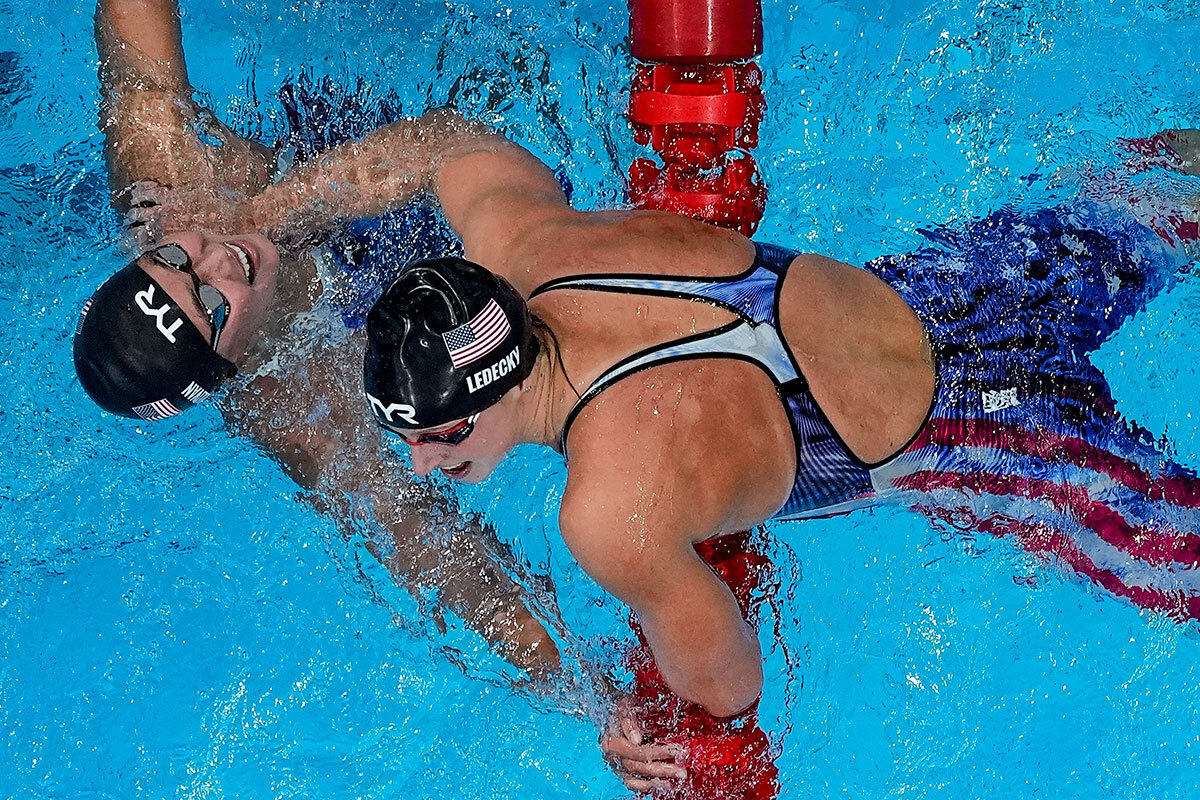
- Quick Read
- Deep Read ( 5 Min. )
Pierre de Coubertin, architect of the modern Olympics, intended the competition to celebrate masculine athletic prowess. “An Olympiad with females,” he once said, “would be impractical, uninteresting, unaesthetic and improper.”
By 1900, though, women had made it to the Games – but in sports considered properly delicate, like tennis and croquet. For decades, organizers barred women from long-distance competitions, fearing the strain would be too much.
More than a century later, things have changed. Forty-nine percent of the athletes in Tokyo are women, making this Olympics the most gender-balanced in history. Its most famous contenders, such as Simone Biles and Naomi Osaka, are women. So are its most dominant teams, such as U.S. women’s water polo.
But there’s a long road yet to equality, female athletes say – and they’re breaking new ground this summer. Katie Ledecky’s gold medal in the 1,500-meter freestyle swim, for example, was not just a personal victory. It was the first time that event had been open to women.
A new generation of athletes has a new vision of equality, said silver medalist Erica Sullivan. “Getting to be on the podium in Japan as an Asian American woman and getting to take silver in a historical women’s event ... it’s so cool,” she said. “It’s just so cool.”
Why Katie Ledecky’s gold represents something bigger at the Games
Katie Ledecky, perhaps the greatest female distance swimmer of all time, has dominated the women’s 1,500-meter freestyle for the better part of a decade. At one point this week, she held the 11 fastest times in its history. Her world-record time is 18 seconds ahead of the second-fastest finisher.
But until Wednesday, Ms. Ledecky didn’t have an Olympic medal in the event. For decades, the 1,500-meter was only available to men.
After a disappointing 200-meter final, Ms. Ledecky had an hour to rally herself for the mile-long race. When she entered the pool again, it wasn’t close. She spent the entire race multiple lengths ahead of the competition, and finished four seconds ahead of second-place Erica Sullivan, her teammate.
“I’m so happy to go one-two there with Erica on the first women’s mile,” Ms. Ledecky said right after the race. “Can’t have a better outcome than that.”
Her gold marked a personal triumph during a difficult week, including her fifth-place finish in the 200-meter – her first Olympic finish off the podium. But the medal – and the race itself – also marked a symbolic victory for female athletes at the Games. The women’s 1,500-meter had never before featured at the Olympics, which has a long history of restricting women from long-distance events. The women’s marathon, for instance, wasn’t added until the 1984 Summer Olympics.
With just under 49% of all athletes being women, the Tokyo Games are the most gender-balanced in history. Its most famous contenders, such as Simone Biles and Naomi Osaka, are women. Its most dominant teams, such as U.S. women’s water polo, are as well. Once a rarity, mixed-gender events in sports such as swim relays and table tennis are becoming more common. More than ever, women at the Olympics are calling for equal treatment.
Yet even as the Paris Games in 2024 promise more progress toward gender equality, hurdles for female athletes remain steep. Symbolism and statistical progress are welcome, but numbers can hide as much as they reveal, says Michelle O’Shea, a senior lecturer in marketing and sport at Western Sydney University. A litany of controversies coming just before the Games – from gendered uniforms to sexist comments – displays a culture still in need of reform.
The circumstances leave female Olympians in a familiar spot, says Professor O’Shea: somewhere between celebration and lamentation. The Olympic Games have made great strides in gender equity since their founding, she adds, but the only way to make sure those continue is to stay active.
“We want to celebrate the wins and we want to celebrate the change,” says Professor O’Shea. “But ... we’ve still got to do better.”
Long road
Still, in the Olympics’ 125-year history, there’s never been a better time for women at the Games.
Pierre de Coubertin, architect of the modern Olympics, intended the competition to celebrate masculine athletic prowess. “An Olympiad with females,” he once said, “would be impractical, uninteresting, unaesthetic and improper.”
While women competed in the second modern Olympics in 1900, men dictated their participation. Permitted competitions included tennis and croquet, both considered delicate and properly feminine. For decades, organizers barred women from long-distance competitions, fearing the strain would be too much.
Even now, athletes say they’re challenged to dismantle that culture.
Today, nearly two-thirds of International Olympic Committee members are men. While the athletes’ gender balance may almost be equal, coaches and trainers are still disproportionately male. Media coverage, per a Cambridge University analysis of the 2016 Games in Rio de Janeiro, can amplify inequities by infantilizing female athletes – or focusing on their marriages to male competitors.
German gymnasts wore full-length leotards this week, protesting the sexualization of female athletes. The first head of the Tokyo Olympic organizing committee resigned after suggesting women talk too much in meetings. Five-time Olympian Allyson Felix and other mothers at the Games had to fight sponsors and organizers for equal treatment after giving birth. Australian swimmer Maddie Groves stepped away from the sport, citing a culture of misogyny.

Yet “in spite of all the things that have gone wrong and all the areas that we still need to improve upon, I feel like the pace of change has accelerated in the last five years,” says Sarah Duffy, also a senior lecturer of marketing and sport at Western Sydney University and Professor O’Shea’s colleague.
Once disproportionately allocated to men’s sports, prime-time broadcast slots are now split more evenly between genders. Almost every nation appointed a male and female flag bearer at the opening ceremony. Naomi Osaka, an iconic athlete in a country that still ranks low in gender equality, lit the Olympic cauldron.
“It always takes that first person”
That progress, in large part, is a product of athletes who have accepted its costs.
“It’s unfortunate that there’s this process ... that we have to go through,” said U.S. flag bearer and basketball veteran Sue Bird.
An athlete or team protests inequity and meets resistance from organizers, she added, only to see the inequity addressed years later. Reform comes, but those who helped force it rarely experience its benefits.
“It always takes that first person or that first team to stand their ground,” said Ms. Bird. “And I don’t know why it has to be that way.”
One “first” in Tokyo is women’s featherweight boxing, a weight class added just this year. Until 2012, women weren’t allowed to box in the Olympics at all, and the sport’s foothold has grown at each Games since.
“The equality between both male and female has come a long way,” said American featherweight Yarisel Ramirez after being eliminated in the round of 32. Being here “is a good, prime example ... that us women are just as equal as the men.”
Back at the pool, finishes like Ms. Sullivan’s set an example as well.
On Wednesday, she cut several seconds off her qualifying time from Sunday, finishing four seconds behind Ms. Ledecky in the 1,500-meter final.
It was a difficult year training in Ms. Sullivan’s native Nevada. At one point during the pandemic, she swam in a neighbor’s single-lane 25-meter pool. At another, she and her team trained in the swampy waters of Lake Meade, emerging covered in bug bites. She’d never finished so close to Ms. Ledecky, an idol of hers, and didn’t expect to in the 1,500-meter final, either.
But for Ms. Sullivan – the daughter of a Japanese immigrant, and who identifies as queer – a silver medal is a symbolic victory for a new generation of American athletes, who look and act different than Olympians of the past. That generation, she says, has a new vision of equality.
“Getting to be on the podium in Japan as an Asian American woman and getting to take silver in a historical women’s event ... it’s so cool,” she said. “It’s just so cool.”

Film
Grab your oar: ‘Jungle Cruise’ takes viewers on a wild ride
If a movie is based on a theme park ride, does it follow that it’s not good? Chief culture writer Stephen Humphries says that spirited “Jungle Cruise” is fueled by energetic acting that helps it to rise above its commercial origins.
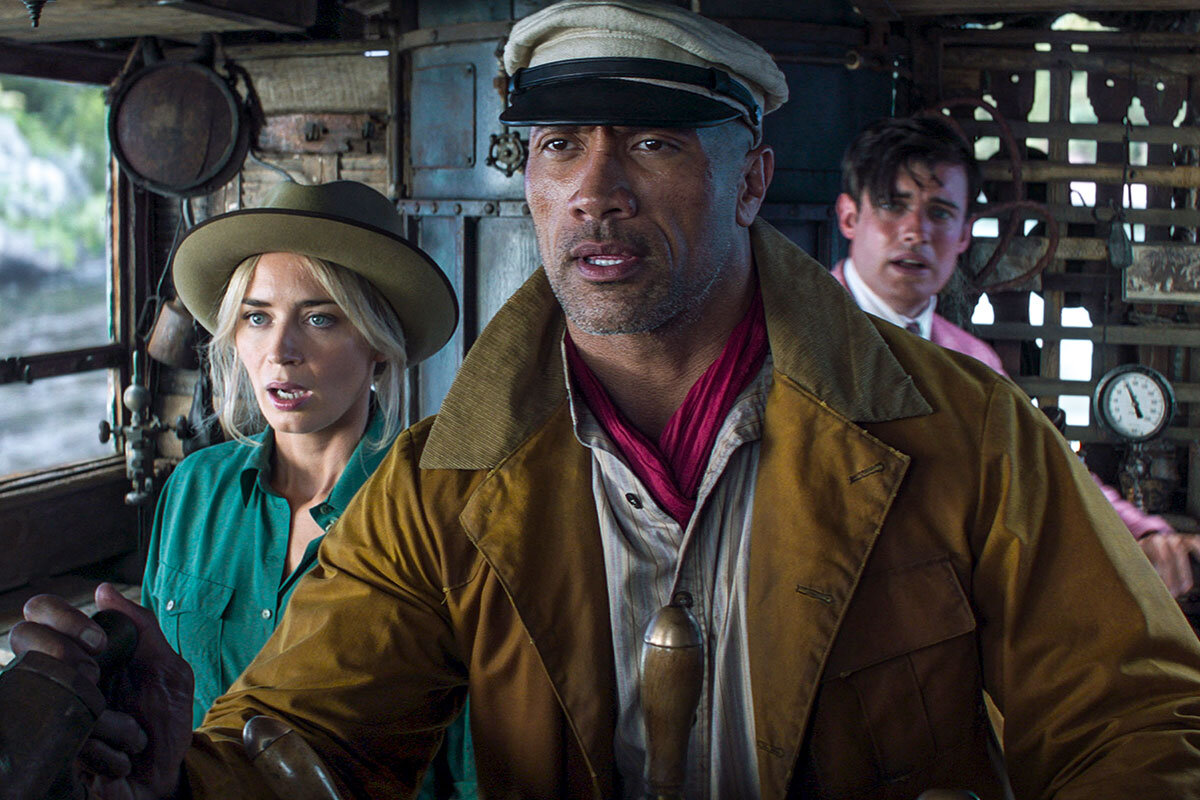
Grab your oar: ‘Jungle Cruise’ takes viewers on a wild ride
“Jungle Cruise,” opening July 30, is just the latest of many movies Disney has based on its theme park rides – from “Pirates of the Caribbean” to “Country Bears” to “The Haunted Mansion” to “Tomorrowland.” What’s left? If viewers end up having as much fun as the “Jungle Cruise” actors do on screen, would Disney move on to “it’s a small world”? Perish the thought.
Emily Blunt plays Lily Houghton – essentially a female Indiana Jones – who ventures to the Brazilian jungle in 1916. Dwayne Johnson (aka The Rock) plays Frank Wolff, the skipper of a small steamboat who ferries her up the Amazon. Lily’s patrician brother MacGregor (Jack Whitehall) also tags along for the ride. Their quest: find a mythical and mystical flower called Tears of the Moon. The trio is pursued by a German military commander, Prince Joachim (Jesse Plemons), who believes that the flower’s healing powers will help his nation win the Great War. Additional dangers lie in store, from perilous waterfalls to a tribe of alleged man-eaters in the jungle.
The movie version of “Jungle Cruise” adapts some of its story points from the original theme park ride (though some aspects, such as the depiction of the tribe as primitive cannibals, have been revised – in keeping with recent updating to the attraction). Yet the movie mostly steals the best parts of other movies, including “The Mummy” and “Pirates of the Caribbean.”
To compensate for the lack of originality, the screenwriters have assembled familiar ingredients. For instance, Lily and Frank bring a humorous twist to the rope swing sequence lifted from the “Romancing the Stone” poster. During an action scene reminiscent of “Raiders of the Lost Ark,” James Newton Howard’s score for “Jungle Cruise” pays homage to John Williams’ soundtrack from that earlier movie. Johnson as Frank even models the very same cap that Humphrey Bogart wore in “The African Queen.”
Like Katharine Hepburn in the aforementioned movie, Lily wears a pair of trousers. Bemused at her unconventional clothing, Frank takes to calling her Pants. Her retort is to nickname him Skippy. The wonderful comedic chemistry between the duo keeps the movie floating well above the waterline when it gets bogged down with CGI-heavy action. Johnson is in his wheelhouse in more ways than one – with the boat captain leaning on his natural charm, even when he’s selfish and duplicitous.
Following a string of mostly serious roles, Blunt lets her hair down, just like her character does. (Kudos to her for the rare feat of not looking completely ridiculous in a pith helmet.) “Jungle Cruise” is the first movie in quite some time to fully tap into her vivacious star power. The two leads aren’t the only ones having a blast. Plemons is a hoot as a pompous villain who isn’t averse to breaking into song with his crew of henchmen. Paul Giamatti shows up with a dubious Italian accent and a parrot on his shoulder.
The production’s level of craftsmanship is high. Yet director Jaume Collet-Serra never does anything that’s artistically risky. (The closest the movie gets to a left-field choice is roping in Metallica to perform an orchestral-rock version of their song “Nothing Else Matters” during an intense action scene.) Everything is carefully calibrated to be on-brand for Disney. So a scene in which someone comes out as gay seems like an effort to redress criticism about the corporation’s lack of (openly) LGBTQ characters. The sensitively played revelation is accepted with grace rather than judgment. But it’s not particularly believable for the time period.
Similarly, the modern-day take on colonialism, Indigenous people, and gender roles can feel as if it wandered in from another era and sticks out, like, well, a hippopotamus on the riverbanks of the Amazon. Which is to say that “Jungle Cruise” was never authentic in the first place. That goes for the location filming, which took place in Georgia and Hawaii rather than South America. The jungle’s creatures and landscape shots are all pixel dust. We’re not expecting believability.
The one thing that isn’t artificial – the most important element of all – is the movie’s spirit. Acting in franchise blockbusters often amounts to get-the-job-done professionalism. In “Jungle Cruise,” however, the actors approach the material as if they’re enjoying a day out at Disneyland. At one point, Blunt grabs hold of a rope and pauses to beam with unfeigned glee. Then the actor gets hoisted up, but she’s already soaring.
“Jungle Cruise” is in theaters and available to stream for an additional fee starting July 30 on Disney+. The film is rated PG-13 for sequences of adventure violence.
Other headline stories we’re watching
(Get live updates throughout the day.)The Monitor's View
Want to recycle better? Get manufacturers involved.
- Quick Read
- Deep Read ( 2 Min. )
-
By the Monitor's Editorial Board
Who should pay to recycle all that plastic, paper, and other packaging that come into homes, from milk bottles to those seemingly impenetrable plastic wrappers surrounding electronic gadgets?
The companies selling products, not consumers, should bear that responsibility, says a law just enacted in Maine. That shift in thought, if it continues to spread more widely, could go a long way toward saving struggling local recycling programs, and result in less packaging that is more easily recycled and the reduction of greenhouse gases.
The Maine law sets up a nonprofit group to supervise recycling. Companies pay fees to the nonprofit based on how much packaging they sell in the state – and how easily recyclable it is. The nonprofit then will distribute these funds to cities and towns to help them pay for their recycling programs.
Several other U.S. states are considering similar legislation. Such laws have been a success in Europe and elsewhere around the world.
Perhaps one of the biggest benefits of these laws may be the opportunity they provide for manufacturers and recycling programs to work in closer harmony. Encouraging the manufacture of products with less, or more easily recycled, packaging should be a win for everyone.
Want to recycle better? Get manufacturers involved.

Who should pay to recycle all that plastic, paper, and other packaging that come into homes, from milk bottles to those seemingly impenetrable plastic wrappers surrounding electronic gadgets?
The companies selling products, not consumers, should bear that responsibility, says a law just enacted in Maine. That shift in thought, if it continues to spread more widely, could go a long way toward saving struggling local recycling programs, and result in less packaging that is more easily recycled and the reduction of greenhouse gases.
The Maine law sets up a nonprofit group to supervise recycling. Companies will pay fees to the nonprofit based on how much packaging they sell in the state – and how easily recyclable it is.
The nonprofit then will distribute these funds to cities and towns to help them pay for their recycling programs, now funded with taxpayer dollars. Importantly, the system will also clarify and standardize just what is and isn’t recyclable.
Several other U.S. states are considering similar legislation, often referred to as extended producer responsibility (EPR) laws.
Such laws have been a success in Europe and elsewhere around the world. For example, after EPR laws were put in place, the recycling of packaging and paper shot up from 19% to 65% in Ireland and from 38% to 67% in Italy, according to the Product Stewardship Institute, a Boston-based nonprofit group promoting EPR laws.
Increasing recycling helps reduce production of climate-altering greenhouse gases created when new packaging materials, such as plastic, which is derived from oil, are manufactured.
In Maine, companies will be rewarded with lower fees if they use packaging that is more easily recycled, creating an incentive for them to do so.
The Maine law “helps to shift the paradigm, which for way too long has focused on the consumer and the consumer’s responsibility and lifestyle choices,” said Janet Domenitz to The Boston Globe. She is executive director of the Massachusetts Public Interest Research Group, which is backing similar legislation in Massachusetts.
In the United States, the recycling rate (including composting) in 2018 was 32.1%, according to the latest statistics from the Environmental Protection Agency. That was down from 34.7% in 2015. Many local recycling programs are struggling, especially since China stopped accepting recycled materials from the U.S.
Perhaps one of the biggest benefits of EPR laws may be the opportunity they provide for manufacturers and recycling programs to work in closer harmony. Encouraging the manufacture of products with less, or more easily recycled, packaging should be a win for everyone.

A Christian Science Perspective
Each weekday, the Monitor includes one clearly labeled religious article offering spiritual insight on contemporary issues, including the news. The publication – in its various forms – is produced for anyone who cares about the progress of the human endeavor around the world and seeks news reported with compassion, intelligence, and an essentially constructive lens. For many, that caring has religious roots. For many, it does not. The Monitor has always embraced both audiences. The Monitor is owned by a church – The First Church of Christ, Scientist, in Boston – whose founder was concerned with both the state of the world and the quality of available news.
‘Miracles’ for everyone
- Quick Read
- Read or Listen ( 3 Min. )
-
By Dorothy Estes
Learning something of the divine law that undergirded Jesus’ healing works empowers us to experience God’s universal, healing goodness more fully – right here and now in our daily lives.
‘Miracles’ for everyone
Who doesn’t like hearing about miracles? Or better yet, experiencing one! Both the Old and New Testaments of the Bible have a fair share of remarkable experiences, from the Red Sea parting so Moses could lead the Israelites to freedom from their Egyptian captors, to the healing works of Jesus and his disciples. Even today we occasionally hear news of “miraculous” occurrences.
Macmillan Dictionary defines “miracle” as “an event that cannot be explained according to the laws of nature and is considered to be an act of God,” or “something extremely lucky that would not normally be possible.” The first definition is certainly applicable to the many wonderful healings found in the Bible. Christ Jesus’ healings of lifelong physical conditions, blindness, deafness, contagious diseases, character flaws, and other ailments are a primary example.
But are they examples of luck? Christian Science offers a different way to think about such events: as based on unchanging, always-present laws of God, who is divine Principle – spiritual laws that everyone who is willing to learn can understand and put into practice.
Mary Baker Eddy, who founded this news organization, discovered these laws of God over a century ago through her study of the Bible. She was able to heal herself and others through the same laws and power of God that undergirded Jesus’ healings and teachings. She named her discovery Christian Science; and today, too, many individuals are being healed through putting into practice the ideas found in the Bible and the Christian Science textbook, “Science and Health with Key to the Scriptures,” authored by Mrs. Eddy.
Science and Health explains: “The term CHRISTIAN SCIENCE was introduced by the author to designate the scientific system of divine healing.
“The revelation consists of two parts:
“1. The discovery of this divine Science of Mind-healing, through a spiritual sense of the Scriptures and through the teachings of the Comforter, as promised by the Master.
“2. The proof, by present demonstration, that the so-called miracles of Jesus did not specially belong to a dispensation now ended, but that they illustrated an ever-operative divine Principle” (p. 123).
Starting from this premise, we begin to realize that experiencing divine goodness isn’t a question of luck, but of universal Principle. God, good, is the divine Principle and creator of the universe, including us as His spiritual offspring. It’s logical that everything in God’s universe is spiritual and good, like God; this perfect Principle perpetually maintains its creation in its spiritual perfection. When we understand even a little of this spiritual reality, we can demonstrate in some degree its healing effect.
When I was very new in my study of Christian Science, I worked for a poultry processing plant. One day, while opening a crate, the sharp end of a wire closure caught in the inner part of my thumb, wounding it pretty badly. My first thought was, I haven’t time for this!
But my next thought was, Why not try applying what you know of Christian Science? So I thought about what I had been learning: that because God is perfect, infinite Spirit, injuries are unknown to Him. Therefore, an injury could not truly be part of me as God’s spiritual offspring, or idea. I mentally affirmed that I was governed by God’s law of perpetual goodness, and that even though the injury seemed like part of me, it was completely unknown to spiritual sense, our inherent capacity to view the spiritual reality of being.
I was able to continue working, and about a half-hour later, I suddenly remembered my thumb. There was not a single bit of evidence that it had been injured in any way.
It sure felt like a kind of miracle. But I knew it wasn’t luck. It was the kind of healing that naturally comes as a result of prayerfully affirming the laws of God. “This stuff works!” was my initial reaction. From that day to this, I have diligently studied and practiced Christian Science in all aspects of my life, and have continued to experience and witness wonderful healings, so-called “miracles” – as we all can!

A message of love
A tradition continues
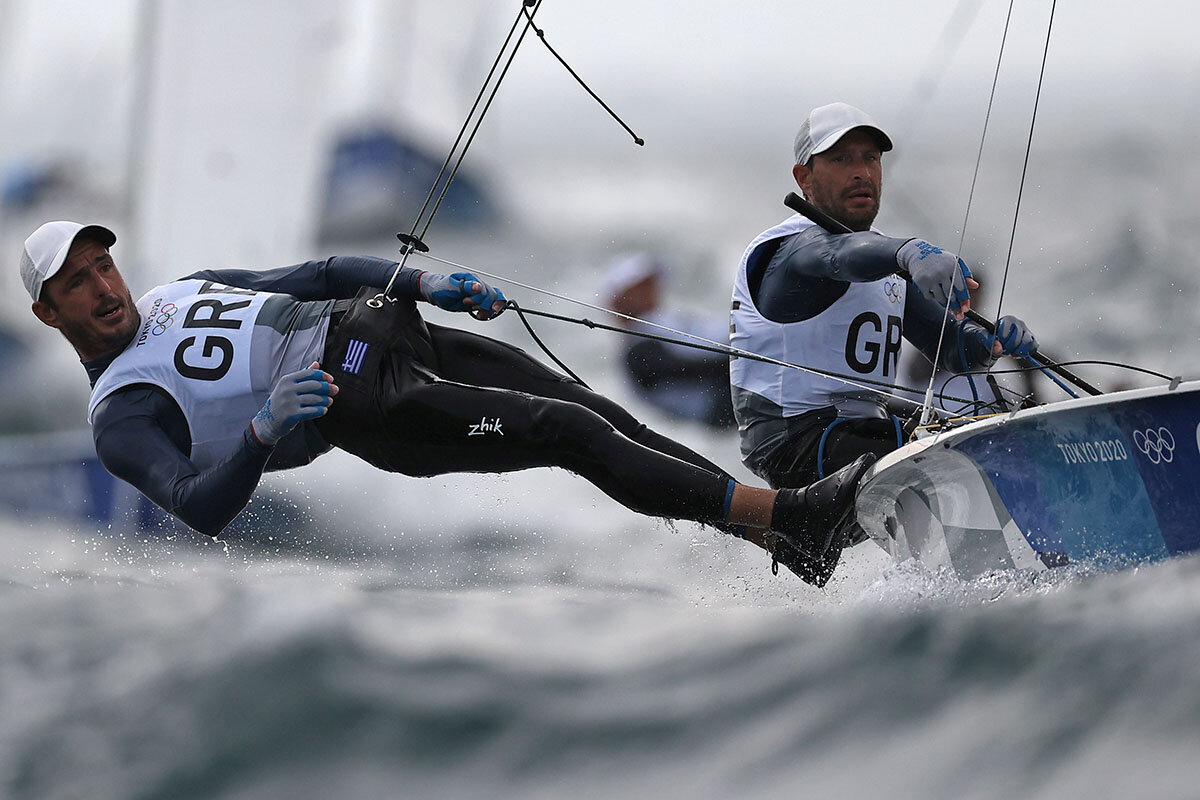
A look ahead
Thank you for joining us today. Please come back tomorrow when Ann Scott Tyson examines an overlooked trend in recent coverage of Asian American communities – a political awakening.



